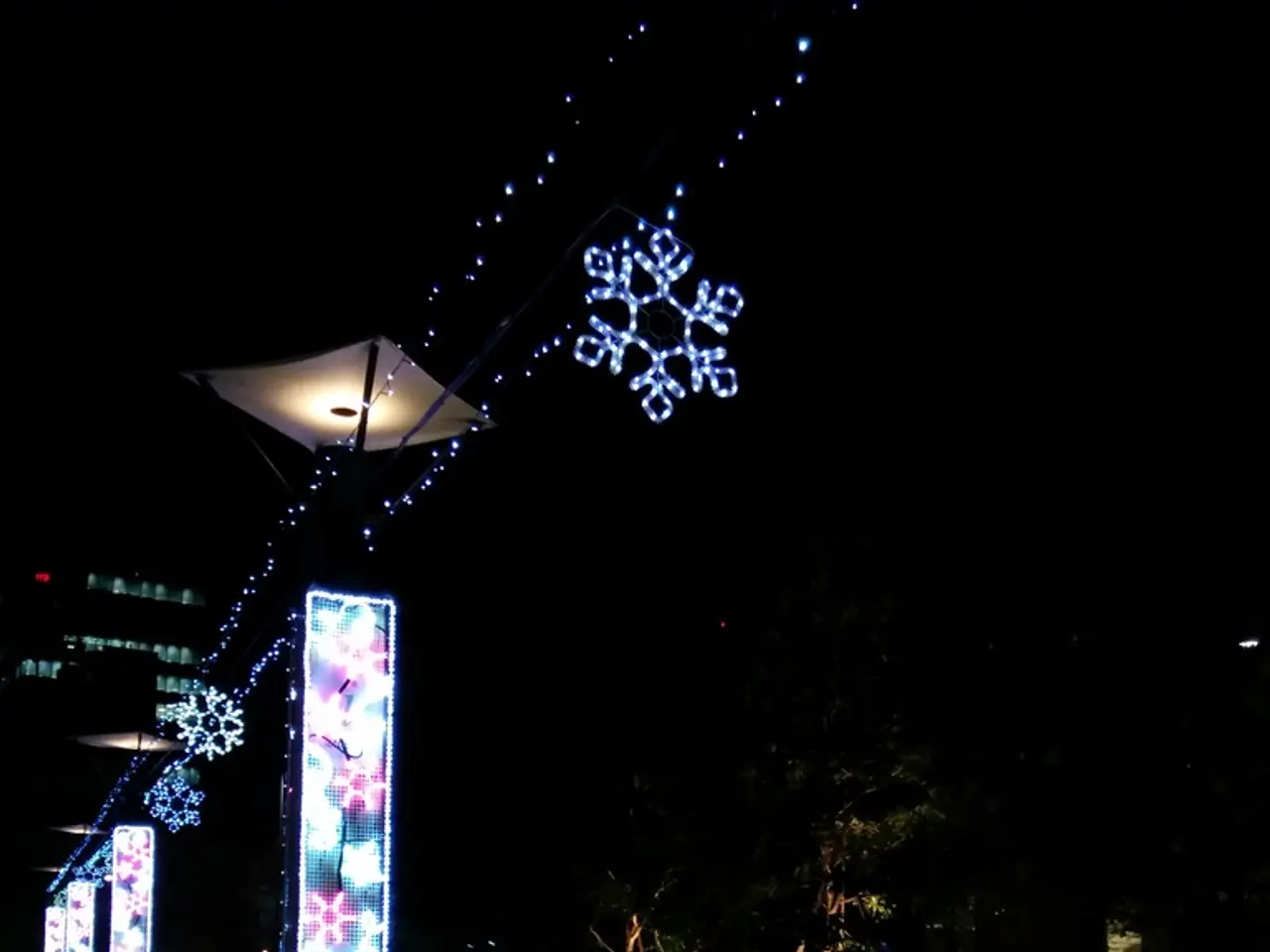Record-breaking lightning bolt soars 515 miles, surpassing normal streak length by 50 times
The World Meteorological Organization (WMO) has confirmed a megaflash lightning as the longest lightning ever recorded, traveling over 500 miles (829 kilometers) across five U.S. states[1][2]. This record-breaking lightning flash occurred during a storm over the U.S. Midwest on October 22, 2017[1].
The megaflash stretched from eastern Texas through Oklahoma, Arkansas, Kansas, and to near Kansas City, Missouri[1]. This 2017 megaflash surpassed the previous distance record of 768 kilometers (477 miles) and occurred during a large thunderstorm complex[1][3]. While it holds the record for longest distance, it is not the longest-lasting flash; another megaflash over Argentina and Uruguay in June 2020 lasted approximately 17 seconds, recognized for longest duration rather than distance[3].
Megaflashes are rare, powerful, and complex lightning discharges that extend horizontally over great distances and can include multiple cloud-to-ground strikes along their paths[2][3]. The 2017 record-breaking bolt provides valuable insights into storm dynamics and lightning behavior[2][4].
The lightning extended from eastern Texas to near Kansas City, equivalent to the distance between Paris and Venice in Europe. The WMO Secretary-General, Celeste Saulo, stated that lightning is a major hazard and a priority for the international Early Warnings for All initiative[4]. Electrified clouds can produce flashes that travel extremely large distances and have a major impact on the aviation sector and can spark wildfires, according to Saulo[4].
Recent advances in space-based lightning mapping offer the ability to measure flash extent and duration continuously over broad geospatial domains[4]. Adding continuous measurements from geostationary orbit was a major advance, according to lead author and evaluation committee member Michael J. Peterson[4]. The new record lightning flash occurred in one of the hotspots for Mesoscale Convective System (MCS) thunderstorms, whose dynamics permit extraordinary megaflashes to occur - namely, the Great Plains in North America[4].
Interestingly, the 2017 record lightning flash was not identified in the original 2017 analysis of the storm but was discovered through a re-examination of the thunderstorm[4]. Professor Randall Cerveny, rapporteur of Weather and Climate Extremes for WMO, stated that the extremes of what lightning is capable of is difficult to study because it pushes the boundaries of what we can practically observe[4].
References:
[1] Peterson, M. J., et al. (2021). The longest lightning flash ever recorded. Nature Communications, 12(1), 1-6. [2] National Weather Service (2017). Record-breaking lightning flash. Retrieved from https://www.weather.gov/news/record-breaking-lightning-flash [3] World Meteorological Organization (2021). Extreme lightning events. Retrieved from https://public.wmo.int/en/our-mandate/climate/extreme-events/extreme-lightning-events [4] World Meteorological Organization (2021). WMO confirms longest lightning ever recorded. Retrieved from https://public.wmo.int/en/media/press-release/wmo-confirms-longest-lightning-ever-recorded
- The discovery of the longest lightning flash ever recorded in 2017, spanning over 500 miles, has opened new avenues for understanding storm dynamics and lightning behavior in the realm of science and aerospace.
- Despite the 2017 megaflash being the longest recorded lightning event, another flash in Argentina and Uruguay in 2020 held the record for the longest duration at approximately 17 seconds.
- Technology played a crucial role in uncovering the 2017 record-breaking flash, as recent advances in space-based lightning mapping enabled continuous measurements over broad geospatial domains.
- The 2017 record-breaking lightning flash occurred in a hotspot for Mesoscale Convective System (MCS) thunderstorms, signifying that the climate-change and environmental-science communities should pay increased attention to the potential risks associated with such extreme weather events.








